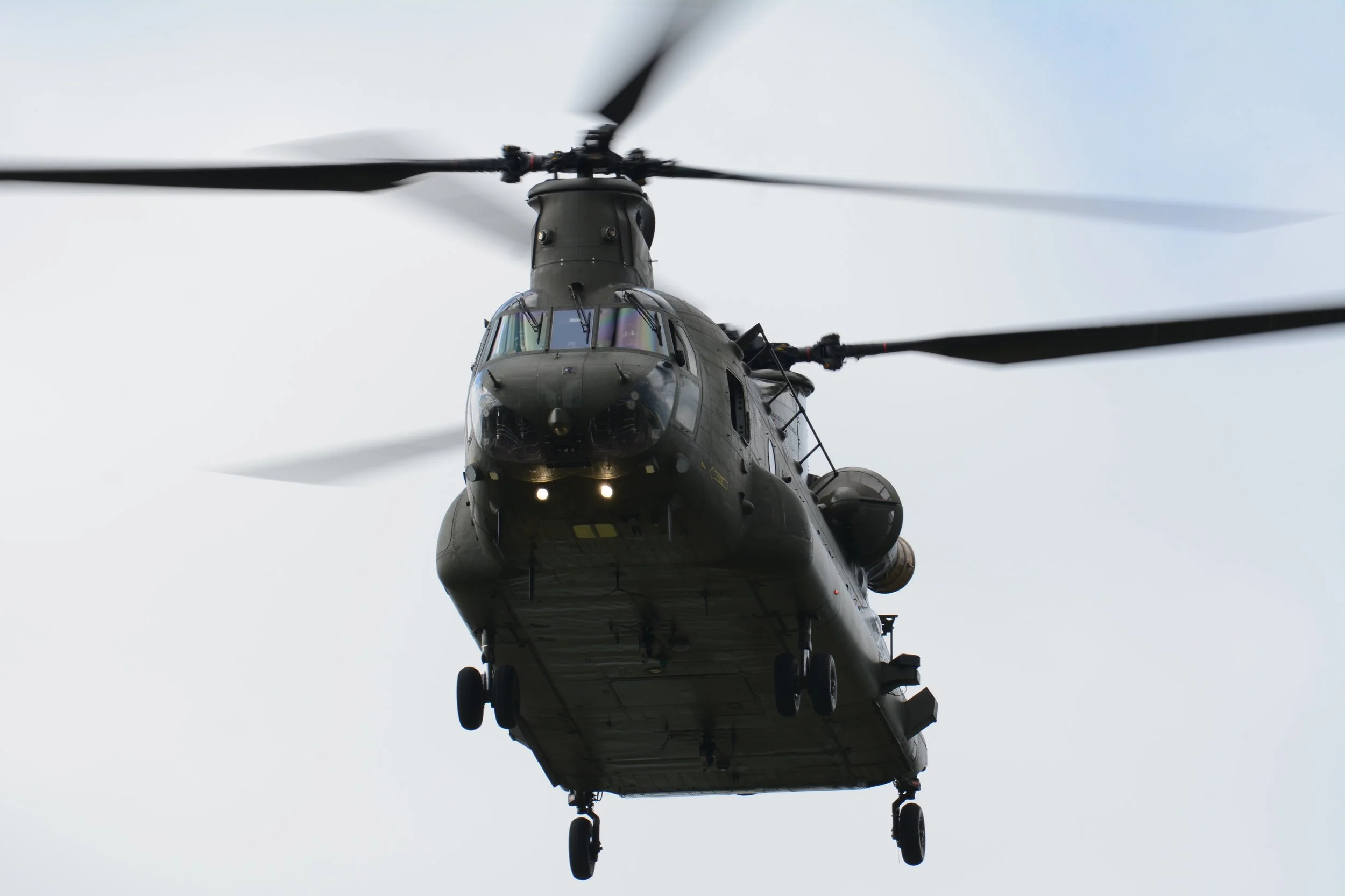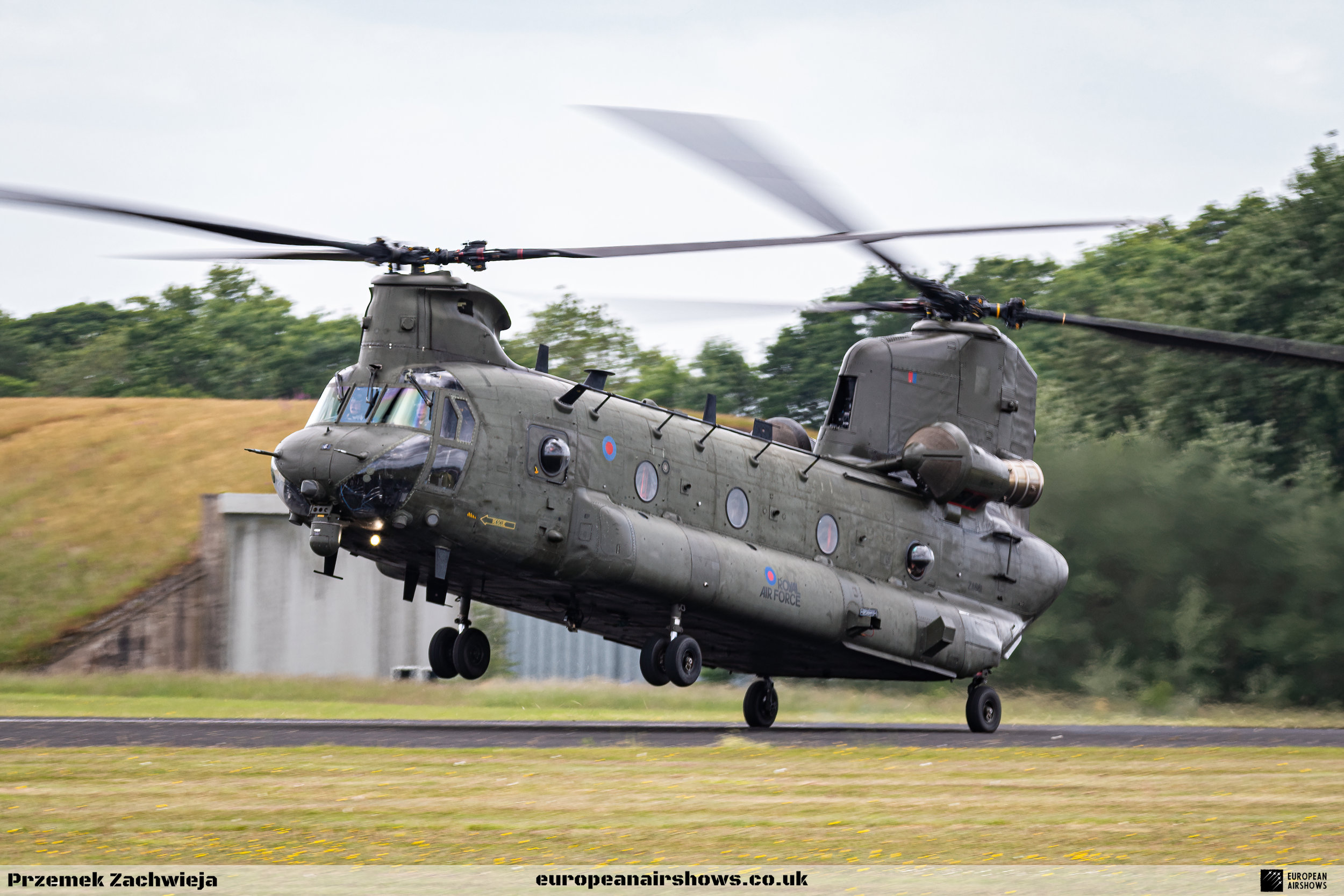
September 21 / Boeing CH-47 Chinook first flight
First Flight 21 September 1961
Boeing CH-47 Chinook
The Boeing CH-47 Chinook is an iconic military helicopter known for its distinctive tandem rotor design and formidable capabilities. Its history is a fascinating tale of innovation, adaptation, and service that spans several decades, beginning in the early 1950s. The Chinook was developed in response to the United States Army’s need for a heavy-lift helicopter that could transport troops, supplies, and equipment in a variety of challenging environments.
The origins of the CH-47 can be traced back to the post-World War II era when the U.S. military sought to enhance its aerial capabilities. In 1956, the Army issued a requirement for a new helicopter that could carry a significant payload over considerable distances. Boeing Vertol, a division of the Boeing Company, was awarded the contract to develop the CH-47. The design team, led by the visionary engineer Frank Piasecki, focused on creating a helicopter that could meet the Army’s demanding specifications.
The first prototype of the CH-47 made its maiden flight on September 21, 1961. Its design featured two large counter-rotating rotors, which provided stability and allowed for a higher payload capacity compared to traditional single-rotor helicopters. This tandem rotor configuration also enabled the Chinook to maintain excellent performance in various flight conditions, including high altitudes and hot weather, making it well-suited for military operations around the world.
The CH-47 entered service with the U.S. Army in 1962, just in time for the escalating conflict in Vietnam. The helicopter quickly proved its worth in the challenging terrain of Southeast Asia, where its ability to transport troops and supplies was invaluable. The Chinook was capable of carrying up to 55 troops or 24,000 pounds of cargo, making it one of the most versatile helicopters in the Army’s fleet. Its ability to perform air assaults, resupply missions, and medical evacuations solidified its reputation as a workhorse of the battlefield.
During the Vietnam War, the CH-47 faced numerous challenges, including hostile fire and difficult weather conditions. Despite these obstacles, the helicopter’s robust design and powerful engines allowed it to continue operating effectively. The Chinook’s versatility was further demonstrated through various modifications and upgrades, including the introduction of the CH-47A and later variants like the CH-47B and CH-47C, which featured improved engines and avionics.
As the Vietnam War drew to a close, the CH-47 continued to evolve. The introduction of the CH-47D variant in the 1980s marked a significant leap forward in terms of technology and capability. The CH-47D featured advanced avionics, a more powerful engine, and improved cargo handling systems, making it even more effective in a wide range of missions. This variant also incorporated a digital flight control system, enhancing the helicopter’s performance and safety.
The Chinook’s operational history is marked by its participation in numerous conflicts and humanitarian missions around the world. It played a crucial role in operations such as Desert Storm in 1991, where it was used to transport troops and supplies during the Gulf War. The helicopter’s ability to operate in austere environments and carry heavy loads made it a vital asset for coalition forces.
In the years following the Gulf War, the CH-47 continued to be deployed in various conflicts, including operations in the Balkans, Afghanistan, and Iraq. Its performance in the rugged terrain of Afghanistan, in particular, showcased its capabilities. The Chinook was instrumental in transporting troops to remote locations, conducting special operations, and providing logistical support in a challenging environment where traditional supply routes were often compromised.
The CH-47 has also been involved in numerous humanitarian missions, including disaster relief efforts following natural disasters. Its ability to transport large quantities of supplies and personnel quickly has made it an essential asset in times of crisis. The helicopter’s versatility extends beyond military applications; it has been adapted for use in civilian roles, including firefighting, search and rescue, and heavy lift operations.
As technology has progressed, so too has the Chinook. The latest variant, the CH-47F, features advanced avionics, digital cockpit displays, and improved rotor systems. These upgrades enhance the helicopter’s operational capabilities, allowing it to remain relevant in modern warfare. The CH-47F is equipped with a modern glass cockpit, which improves situational awareness and reduces pilot workload, ensuring that the Chinook can continue to operate effectively in complex environments.
Throughout its history, the CH-47 Chinook has earned a reputation for reliability, versatility, and adaptability. Its unique design, coupled with its ability to perform a wide range of missions, has made it one of the most successful helicopters in military history. The Chinook has been exported to numerous countries and has become a key component of many nations’ military aviation capabilities.
As of today, the CH-47 Chinook continues to serve with distinction in the U.S. Army and other military forces around the world. Its legacy is one of innovation and resilience, reflecting the evolving needs of modern warfare. The helicopter’s ability to adapt to changing operational requirements ensures that it will remain a vital asset for years to come, continuing to fulfill its role as a heavy-lift helicopter that can transport troops and supplies in some of the most challenging conditions imaginable. The Chinook’s storied history, marked by its contributions to military operations and humanitarian efforts, solidifies its place as a true icon in the world of aviation.
Chinook Facts
Tandem Rotor Design: The CH-47 features a unique tandem rotor configuration, with two large rotors mounted one in front of the other. This design provides increased lift and stability, allowing the Chinook to carry heavy loads and operate in various conditions.
First Flight: The CH-47 made its first flight on September 21, 1961, and entered service with the U.S. Army in 1962. It was designed to meet the Army’s need for a heavy-lift helicopter capable of transporting troops and supplies.
Versatile Cargo Capacity: The Chinook can carry a maximum payload of approximately 26,000 pounds (about 11,800 kg) and has a spacious cargo area that can accommodate a wide range of cargo, including military vehicles, artillery, and personnel.
Dual-Engine Power: The CH-47 is powered by two Honeywell T55 turboshaft engines, which provide redundancy and increased power. This dual-engine setup enhances the helicopter’s performance and reliability in challenging environments.
Combat Experience: The Chinook has seen extensive combat in various conflicts, including the Vietnam War, the Gulf War, and the wars in Iraq and Afghanistan. Its ability to operate in austere environments and under fire has made it a critical asset for U.S. and allied forces.
Special Operations Variant: The CH-47 has several variants, including the CH-47D, CH-47F and MH-47G. The MH-47G variant is designed for special forces operations and features more sophisticated avionics, inflight refuelling capability, a fast rope-rappelling system, and other upgrades.
Search and Rescue Missions: In addition to its cargo transport role, the Chinook is often used in search and rescue operations. Its ability to carry personnel and equipment makes it suitable for humanitarian missions and disaster relief efforts.
Global Operators: The CH-47 has been exported to several countries, including Canada, the United Kingdom, Australia, and Italy. These nations have adapted the Chinook for their specific operational needs, often modifying the aircraft for various roles.
Unique Loading Capabilities: The Chinook’s rear ramp allows for rapid loading and unloading of cargo, and it can also carry oversized items that other helicopters cannot. This capability is particularly useful for transporting heavy equipment and supplies to remote locations.
Longevity and Upgrades: The CH-47 has been in continuous service for over 60 years, making it one of the longest-serving helicopters in military history. Ongoing upgrades and modernization programs ensure that the Chinook remains relevant and effective in contemporary military operations.
























